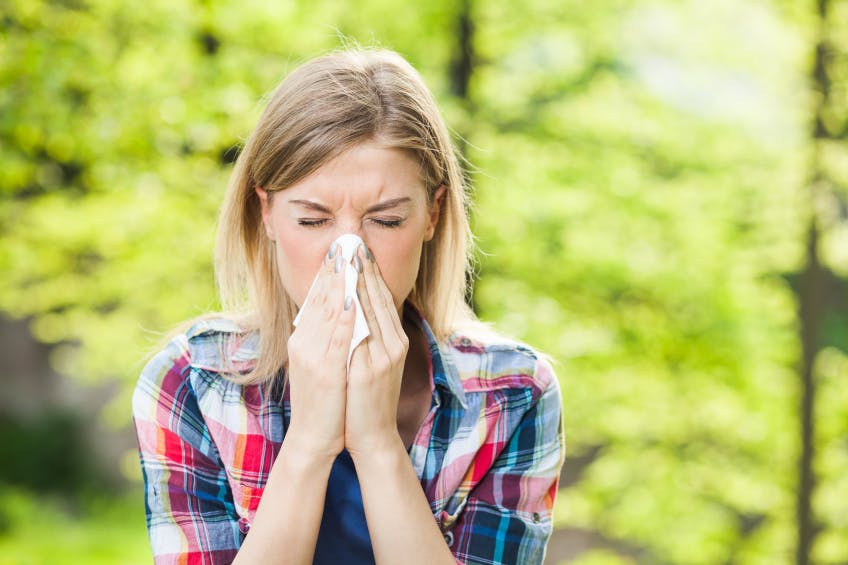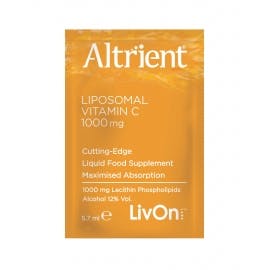Allergy Awareness
This year Allergy UK is focussing on “Air Quality: The Allergens around us” as their topic for 2019 Allergy Awareness week. We are so used to talking about hay fever and food allergies that it’s easy to overlook the impact that indoor air has on our allergy profile.
Indoor Air Quality
According to Allergy UK, everyday an adult breathes in 15 cubic metres of cubic air and a staggering 900 compounds, known to be harmful to health, have been identified in indoor air. These compounds include pollutants from sources such as building materials, furnishings and cleaning products which is particularly problematic for people suffering from airborne allergies, asthma and chronic obstructive pulmonary disease (COPD). According to Allergy UK good indoor air quality is crucial for human health and particularly important for vulnerable groups - babies, children, the elderly, as well as people living with respiratory and allergic diseases.
Since we now spend on average 90% of our time indoors it’s important to consider the quality of the air that you breathe in your home, working and social environments. Poor ventilation, dampness or humidity can lead to an increase in dust mites, spores and mould which may be responsible for aggravating or even causing allergies.
Air-Allergy link
Why is the quality of our indoor air so important? For many of us the air we breathe doesn’t trigger any alarming immediate consequences, but for those suffering from an allergy, indoor air pollutants could trigger a cascade of debilitating symptoms from sneezing, itchy and runny nose and eyes to a more serious swelling of the airways and difficulty breathing. Common airborne allergens include:
- Pollen
- Animal fur
- Dust mites and dust mite faeces
- Bacteria, moulds and spores
- Chemicals found in paints, carpets, perfumes, plastics, plants, cleaning products
- Smoke
- latex
It’s estimated that 20% of the population in the UK suffer from an allergy and 5.4 million people in the UK are currently receiving treatment for asthma. In fact, the UK has the highest prevalence rates of allergic conditions in the world, so it’s time for the UK to clean up its act and freshen-up the quality of our indoor air.
7 ways to improve indoor air quality
- Open windows daily to improve ventilation and freshen up your air supply and consider installing an air purifier to help remove harmful chemicals, smoke, dust mites, moulds, spores, latex, animal fur, bacteria and pollen.
- Invest in some anti-dust mite bedding (mattress, duvet and pillow protectors) and consider buying an anti-bacterial vacuum which uses UV technology to eliminate bacteria and dust mites from bedding.
- Remove carpets and replace with wooden or tiled floors to reduce dust mites and animal fur and invest in a hoover that is allergy approved and removes pet fur, dust mites, pollen and bacteria.
- Invest in a good dehumidifier, especially if you dry your clothes indoors, reducing the air humidity helps to reduce the growth of mould and reduces circulating mould spores.
- Switch chemical-based cleaning products for eco-friendly and bio-degradable cleaning products and eco cloths.
- Choose chemical-free paints and varnishes for home decorating to help reduce the toxic load.
- Switch to fragrance-free beauty products or natural/organic fragrances and swap chemical-based aerosol products (deodorants, body sprays, hairsprays) to natural alternatives or non-aerosol versions.
What exactly is an allergy?
An airborne allergy is a reaction that occurs within the body when a substance that is perceived to be harmful makes contact with one of the surfaces of the body – skin, mouth, nasal passage, throat, lungs. It’s special immune cells (antibodies) that patrol the surfaces of the body looking for harmful substances and then release hormone-like chemicals (histamine) to ‘raise the alarm’ that the body is under threat. The immune cells activate a ‘swelling’ response to seal off the contaminated area and contain the harmful substance. Excess mucus or fluid is produced to help wash away the harmful substance or coughing and sneezing occurs in an attempt to expel the harmful substance from the airways. The natural process of inflammation generates free radicals which may increases the level of oxidative stress potentially damaging surrounding cells and contributing to irritation, pain, redness and soreness. When the allergens can no longer be detected the inflammation and immune response starts to settle down.
Dietary advice to support allergy sufferers
A supportive dietary strategy for allergy sufferers is to reduce alcohol, caffeine, sugary foods, dairy products and red meat as these foods may help to fuel the inflammatory process. Following a dairy-free diet may help some allergy sufferers as dairy foods may be more mucus forming for individuals that suffer from a dairy intolerance. Antioxidants and vitamin C help to neutralise free radicals and support cells that are exposed to higher levels of oxidative stress. Foods naturally rich in antioxidants include purple/red berries (blueberries, blackberries, raspberries, strawberries) and orange/red vegetables (peppers, carrots, squash). Foods rich in vitamin C include berries, goji berries, acai, parsley, citrus fruits and green leafy vegetables. The omega-3 fats found naturally in nuts, seeds and oily fish may support the normal production of anti-inflammatory prostaglandins in the body, to help support a healthy immune system.
Supportive nutrients
Alongside a healthy diet, some specific nutritional supplements could help support the body during times when allergies flare-up. Vitamin C contributes to the normal functioning of the immune system and this nutrient may be in higher demand when the body is coping with an immune stress such as an ongoing airborne allergy reaction. There are many different form of vitamin C supplements and it’s the liposomal form of vitamin C which a higher absorption rate. Research also shows that the antioxidant nutrient glutathione is an important nutrient for supporting lung cells. As with vitamin C, it’s the liposomal form of this nutrient that is important.
By Susie Debice BSc Hons, DipION,
Food Scientist and Nutritional Therapist
References
- https://www.allergyuk.org/allergy-awareness-week-spring-2019
- Joshi PC et al. “The alcoholic lung: epidemiology, pathophysiology, and potential therapies.” Am J Physiol Lung Cell Mol Physiol. 2007;292(4):L813-23
- Vincent HK et al. “Oxidative stress and potential interventions to reduce oxidative stress in overweight and obesity.” Diabetes Obes Metab. 2007 Nov;9(6):813-39
- Skalicky J et al.“Evaluation of oxidative stress and inflammation in obese adults with metabolic syndrome.” Clin Chem Lab Med. 2008;46(4):499-505.
- Lash LH. “Renal glutathione transport: Identification of carriers, physiological functions, and controversies.” Biofactors. 2009;35(6):500-508.
- Richie, J.P.; et al. “Randomized controlled trial of oral glutathione supplementation on body stores of glutathione.” Eur J Nutr. 2014; 194: 55–59; Eur J Nutr. March 2015, Volume 54, Issue 2, pp 251263
- May J, Qu Z, Li X (2001) “Requirement for GSH in recycling of ascorbic acid in endothelial cells.” Biochemical Pharmacology 62(7):873-881.
- Meister A (1994) “Glutathione—ascorbic acid antioxidant system in animals.” The Journal of Biological Chemistry 269(13):9397-9400. Mendiratta S, Qu Z, May J (1998) “Enzyme-dependent ascorbate recycling in human erythrocytes: role of thioredoxin reductase.” Free Radical Biology and Medicine 25(2):221-228.


.jpg?auto=format&q=45&w=262&trim=auto)
.jpg?auto=format&q=45&w=262&trim=auto)
.jpg?auto=format&q=45&w=262&trim=auto)